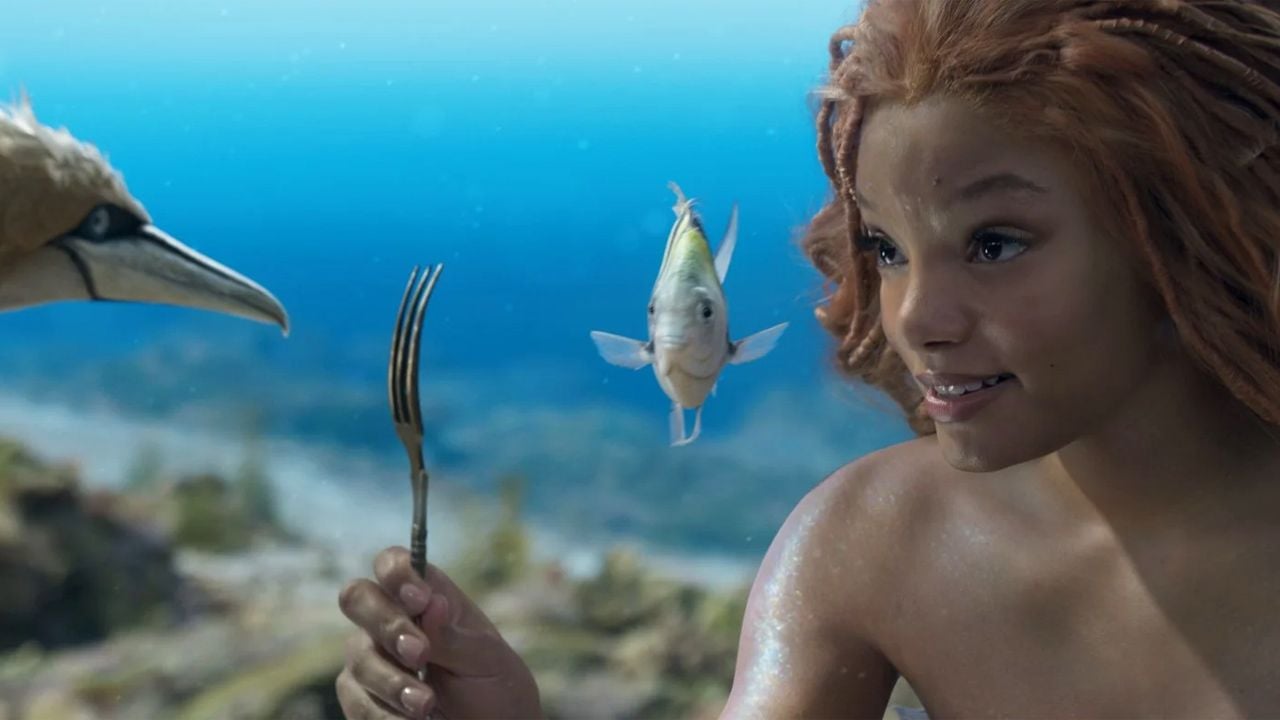Yes, Disney’s Little Mermaid is an iconic film of the LGBTQ+ movement. This is largely due to two people without whom the movie probably wouldn’t exist: Hans Christian Andersen, who wrote the original released in 1837, and Howard Ashman, one of the driving forces behind the legendary 1989 Disney animated film.
Fairy tales of Hans Christian Andersen: responding to unfulfilled love for a man?
According to many literary scholars, Hans Christian Andersen wrote the fairy tale The Little Mermaid in response to an unrequited love. The supposedly bisexual poet probably fell in love with fellow author Edvard Collin. Several letters have survived that should be understood as declarations of love. But Collin didn’t love him anymore. After marrying a woman, Andersen immediately wrote his famous fairy tale.
In the original fairy tale, the mermaid’s love remains unrequited in the end. The human prince marries a human princess. The mermaid, whose voice was stolen, could not confess her love to the prince in time. It is taken as an allusion to the fact that in a world where homosexuality was not accepted, Andersen could not raise his voice to declare his love for Collin either. Like his mermaid, he had to watch helplessly as ‘his prince’ married someone else.
Legendary songs by Howard Ashman: part of another world!
In the Disney adaptation, of course, there is not this ending. You all know that Arielle eventually marries Eric and Ursula is defeated. Despite this, the story continues to refer to the lives and loves of gays and lesbians. played a major role in this Howard Asman. For the writer and songwriter, The Little Mermaid was his first Disney movie. He then had to enrich “Beauty and the Beast” and “Aladdin” with his songs before dying in 1991 at just 40 years old after contracting AIDS. His second Oscar for “Beauty and the Beast” after “Arielle” was awarded to him posthumously. His partner Bill Lauch accepted.
The Howard documentary, available on Disney+, is a wonderful insight into Ashman’s life and work – as well as how his homosexuality and the oppression of the LGBTQ+ community shaped his work at the time.
Especially the legendary song ‘Part Of Your World’ is an LGBTQ+ anthem – along with Judy Garland’s “Over the Rainbow” from “The Wizard of Oz”, probably the best in a movie soundtrack.
Ashman would write a love ballad where Ariel expresses her feelings for Prince Eric. But Ashman disagreed. The mermaid needs an “I Want” song. He prevailed, even though then-Disney executive Jeffrey Katzenberg demanded that the finished song be removed from the film. In “Only Over My Dead”, it is said that Ashman threatened to walk away from the entire project and got his way. Incidentally, nowadays hardly any Disney musical can do without such an “I Want” number and the role model is mainly Ashman.

While Arielle sings about being a part of the human world in Ashman’s lyrics, “Part Of Your World” is often taken as a hymn illustrating gay people’s desire to simply fit in. The song is an expression of the LGBTQ+ community’s desire for acceptance and a place where they can be as “free” as is being sung here.
This can be seen especially against the political background against which the song was written: the HIV epidemic shook the world in the 1980s. Especially in the US, the term ‘gay disease’ led to the exclusion of gay men like Ashman. In this context, it is interesting that his first version of the Disney classic was much more negative: Arielle came to realize that she would never fit in and would never be accepted – that’s how many gay people felt in the late 1980s. was told this was a little too dark for the target audience of children, he changed it to more hopeful lines.
Nevertheless, there are not only lines in which Ariel sings about this alien world and its mysteries (), but also continuous clear lines of text that refer to how many homosexuals want to come out, can come ()
“Arielle, the mermaid” – the new version currently on Disney +
These are not the only references to the LGBTQ+ scene in the cartoon classic. The character Ursula was influenced by the drag scene. The visual role model was legendary drag artist Divine, who passed away in 1988 and is known for his appearances in John Waters films such as ‘Pink Flamingos’, ‘Female Trouble’ and of course ‘Hairspray’. Incidentally, it was Ashman who, from the many different concept ideas for Ursula’s appearance, chose the one that was reminiscent of Divine.
Leading up to the remake, many fans therefore demanded that Disney also hire a drag performer to cast Ursula in the real-life adaptation.”Arielle the mermaid“have to oblige. But in the end, Melissa McCarthy (“Bridesmaids”) got the part – and in our opinion, she cuts a really good figure. You can convince yourself of that now on Disney+.
This is a reissue of an article that previously appeared on FILMSTARTS.
*
Author: Bjorn Becher
Source : Film Starts
I am Dawid Malan, a news reporter for 24 Instant News. I specialize in celebrity and entertainment news, writing stories that capture the attention of readers from all walks of life. My work has been featured in some of the world’s leading publications and I am passionate about delivering quality content to my readers.







